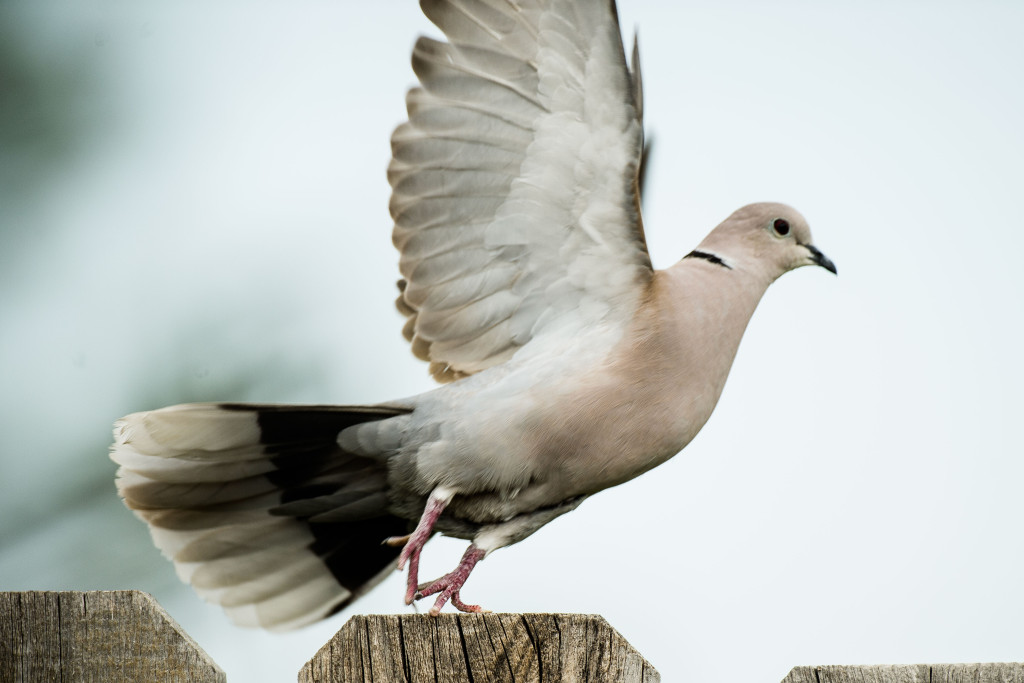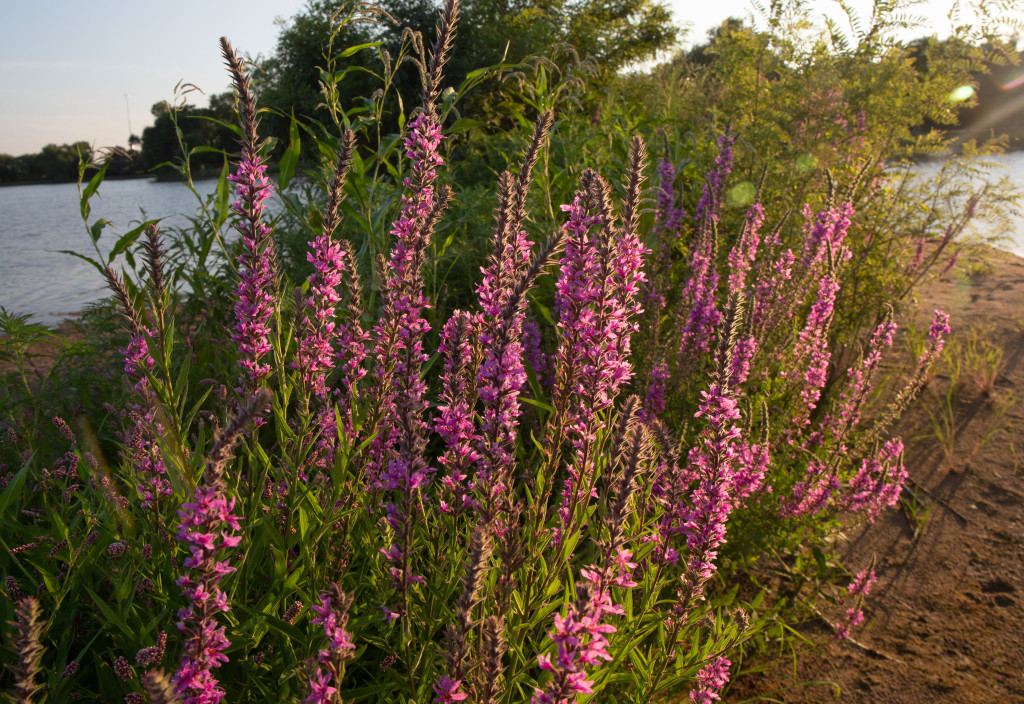
By Monica Macoubrie, Wildlife Education Specialist
Alien invaders have inhabited Nebraska for quite some time. Have you seen them? I’m not referring to the green little Martians that come to mind when the word “aliens” is mentioned. I’m thinking a little less extraterrestrial and spaceships, and a bit more grounded and sprawling.
An invasive species can be any type of organism. It can be an amphibian, plant, fungus, bacteria, mammal, seed, egg, insect, fish, etc., that is non-native to a particular area and causes harm in some way. This harm could mean damage to not only the ecosystem and other native plants and animals, but also economic damage and harm to human health. Invasive species are expensive to control, and once they are established, they are almost impossible to remove from an area. However, not all non-native species are considered invasive. For example, although ring-necked pheasants were introduced from China, they are not considered invasive.
So, what makes a species invasive, and how do they become so successful?
Why are invasive species so successful?
Scientists have been studying invasive species for quite some time, and certain traits are common across all instances. To start, organisms that become invasive have few natural enemies, e.g. predators, competitors, parasites and diseases, etc., to keep their population numbers in check. Second, invasives tend to have very high reproductive rates and are prolific when making offspring. Invasive species are also usually longer-lived than other species, have good dispersal habits (meaning that they are adaptable and can survive in many places), generalists in their diets and are often considered pioneer species. Pioneer species are simply species that are able to live in an area where other animals cannot and are often the first inhabitants and or only inhabitants of a new area. Unfortunately, all these characteristics combined make invasive species highly successful organisms.
Just like other states, Nebraska has its fair share of terrestrial invasive species. Aquatic invasives that hide in our lakes and rivers get a lot of attention. However, lurking on land are non-native, harmful organisms as well.
Eurasian Collared Dove
You’re probably familiar with mourning doves that often call — well, in the morning — and make the typical “oooh-wah-ooo-ooo-ooo” noise. These native doves look similar to the invasive Eurasian collared dove. However, if you know what to look and listen for, you can easily distinguish between the two species.
Invasive Eurasian collared doves are slightly larger and heftier than native mourning doves, and their call sounds more like the nasally caw of a crow. Eurasian collared doves also have a black “collar” around their necks, whereas native mourning doves do not. These birds are found in urban and suburban settings and love the easy access to bird feeders as well as grain silos. Eurasians were introduced to North America from the Bahamas where several birds escaped from a pet shop in the mid-1970s. They have since moved their way across the country. Today, in Nebraska, they can be found statewide.
So, what’s the big deal? Well, these larger doves tend to chase off other native birds at feeders, and they can carry a disease-causing parasite known as Trichomonas gallinae that can spread to other songbirds and native hawks that feed on them.

Asian Jumping Worm
These non-native worms look extremely similar to the introduced European earthworms (nightcrawlers) that we see in the soil. Although not native to Nebraska, the nightcrawlers in our soils are not considered invasive. But, Nebraska has had reports of the Asian jumping worm that is invasive. These worms feed on leaf litter and mulch, like other earthworms — however, the soil they leave behind is dry and grainy, very similar to coffee grounds. The Asian jumping worm’s waste deprives trees and other plants of essential nutrients, and it can also damage plant roots and alter the soil’s water-holding capacity.
Also, Asian jumping worms do not create channels in the soil for plants, nor do they recycle nutrients into the soil for plants to use as European earthworms do. They can also cause invertebrates in the soil to die, which can impact wildlife species that feed on them. In addition, Asian jumping worms change the carbon nitrogen ratio in soils which can impact the effectiveness of pesticides in agricultural fields that have been invaded by these worms.
Asian jumping worms are smooth and glossy and are normally gray or brown in color. The clitellum, or band around the body of the worm, completely encircles the entire worm. In European worms, the clitellum does not go entirely around the worm. These invasive worms get their name due to their jumping and thrashing movements when they are held or disturbed.
Purple Loosestrife
Invasive species don’t have to be animals. Don’t forget that plants can also be considered invasive and harmful in many ways. One plant that has made a severe impact in Nebraska is the purple loosestrife. Although beautiful, this noxious weed causes major damage in in the state.
Purple loosestrife blooms idyllic purple flowers from July through September, often reaching 8 feet in height. The plant thrives in marshes and river and creek banks, especially in the east along the Platte and Niobrara rivers. Purple loosestrife was introduced from Europe as an ornamental for landscaping, and seeds can be spread through wind, water, people, livestock, tires and boats.
So, how does a pretty purple plant impact Nebraska? These plants form dense strands over very large areas, which restricts water movement, traps sediment and causes changes in water quality.

How Invasive Species Spread
The number one way that invasive species spread is by human activity, often unintentionally. People, and the vehicles we use to travel around the world, can often carry uninvited guests. For example, ships can carry aquatic organisms in their ballast water. Insects can hitch a ride in wood on shipping pallets. Ornamental plants can escape into the wild and become invasive. And some species are intentionally or accidentally released pets. Climate change is also causing some species, especially invasive plants, to move into new areas.
How to Curb the Spread
Once invasive species are established, it is nearly impossible to eradicate them. However, there are ways to curb the spread and help make conditions harder for invasives to flourish.
- Use native plants from a local garden center to ensure you are not buying invasive plants.
- Learn to identify invasive species in your area and report sightings to your county extension agent.
- Regularly clean boots, gear, boat, tires and any other outdoor equipment with bleach and hot water.
- Buy firewood near your campsite instead of bringing your own.
- Educate others about the impacts of invasive species.
- Volunteer at local parks or wildlife management areas to remove invasive species.
- Don’t release pets, such as turtles, fish, snakes, lizards, etc.
- Clean, drain and dry your watercraft.
